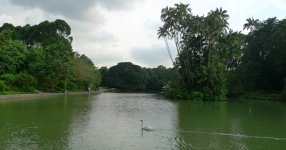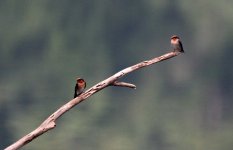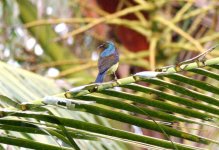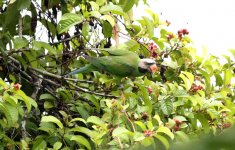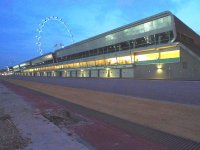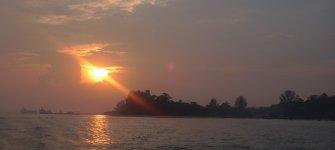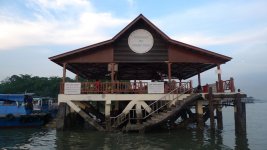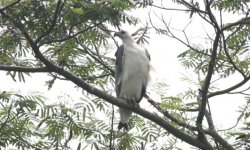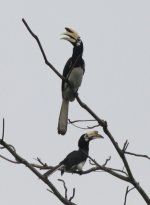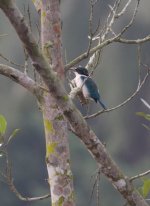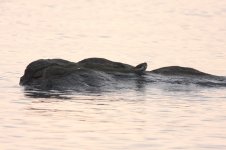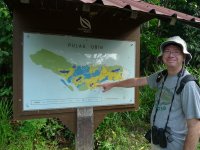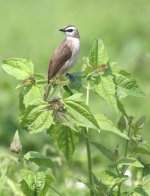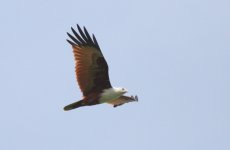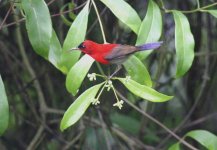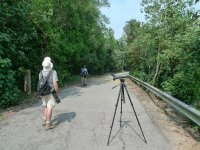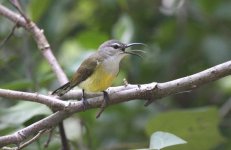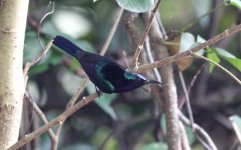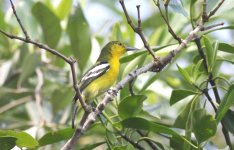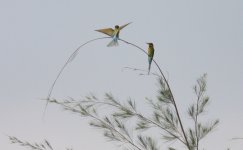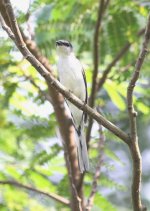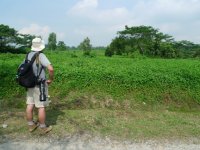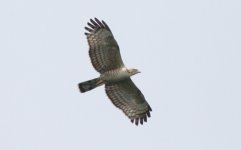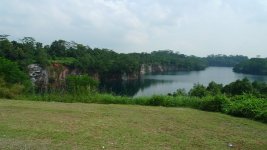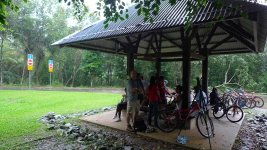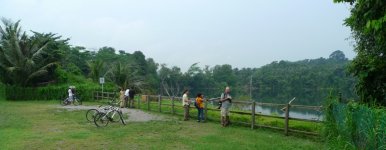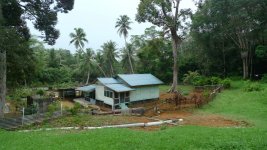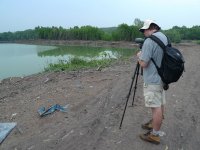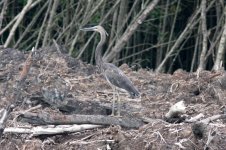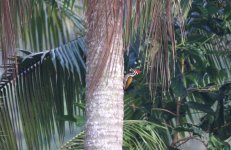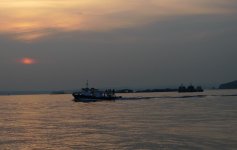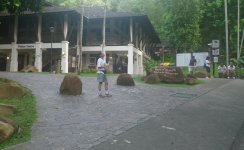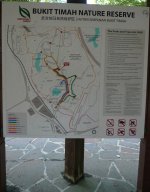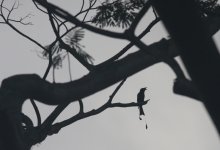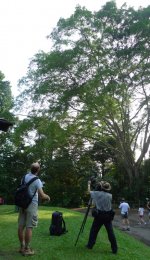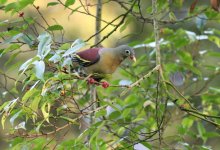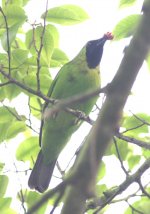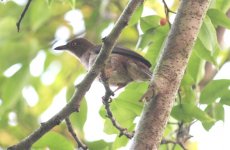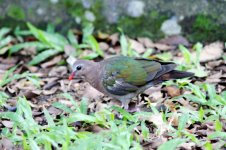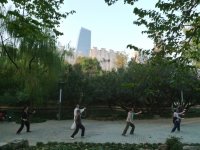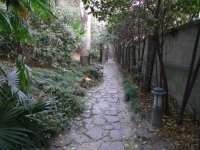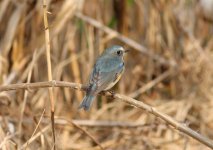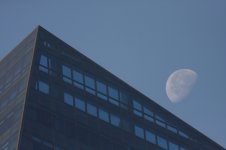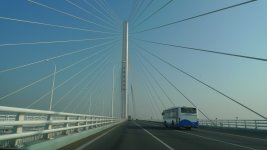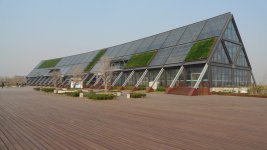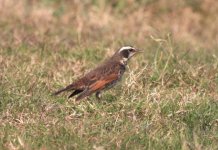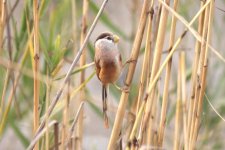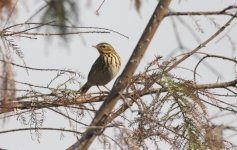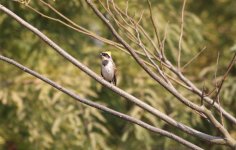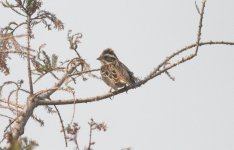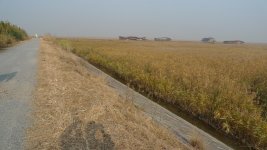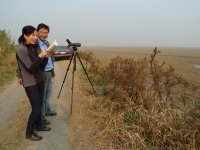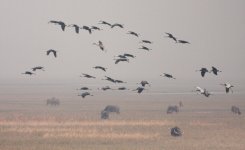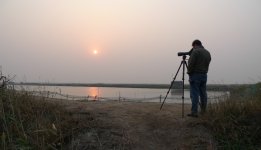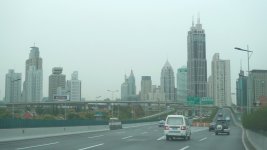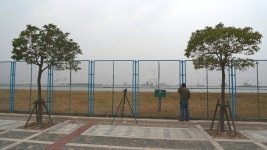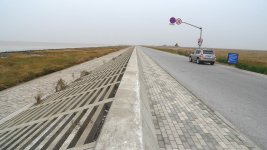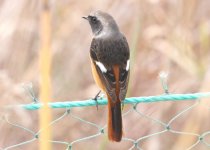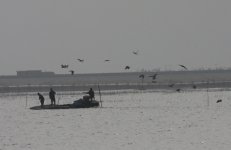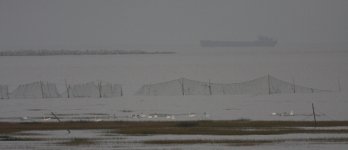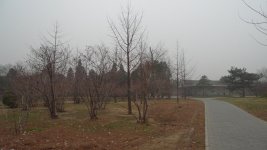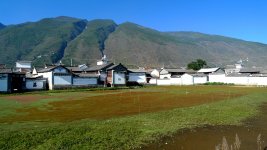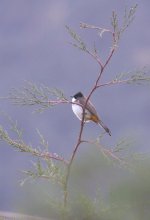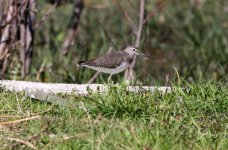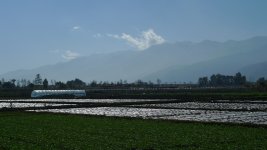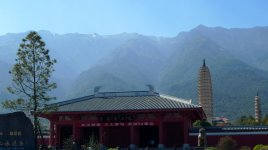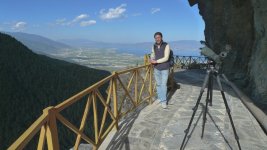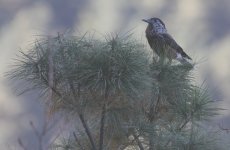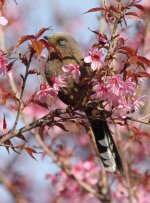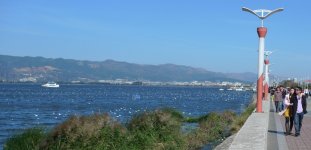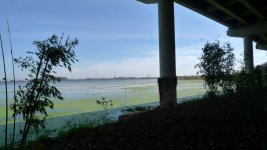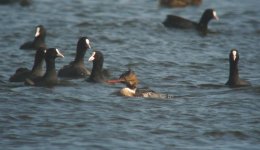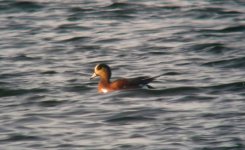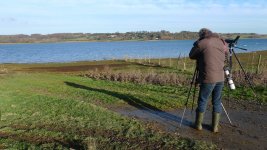20 November 10 (Continued)
Nothing more there, so we thought, but then I spotted a Common Sandpiper (Photo1) sat on some exposed rocks in front of us. From a distance the view reminded me of a swimming hippo with the sandpiper representing its ear. You had to be there I guess!
Moving away from the waters edge we continued along some narrow paths with various trees and bushes close at hand. Just as we turned a corner a Pied Fantail flew out into the open and immediately returned to its cover. While we were trying for better views of the fantail a Black Baza flew into nearby tree, but like the fantail it had other ideas about us taking any photos and soon disappeared! Two very quick Lifers there then!
319.Pied Fantail-----------------Pulau Ubin------------------Singapore
320.Black Baza------------------Pulau Ubin------------------Singapore
Buoyed with those successes the skulking Dusky Warbler almost seemed common, but was still gladly added to the year list.
321.Dusky Warbler--------------Pulau Ubin---------------------Singapore
Mike (Photo 2) and I then moved towards some small freshwater lagoons (Photo 3) surrounded by coconut palms. The different types of birds were baffling me let alone the calls. Thank goodness Mike was an expert. There was one call that stood out from the rest, something that reminded me of a cross between a Nightingale and a Golden Oriole. Mike informed me that it was the sound of one of the largest bulbuls, the Straw Headed Bulbul, but that they were very difficult to find.
Meanwhile I had to make do with a different kind of bulbul, a more normal size bulbul, an Olive Winged Bulbul. That was very quickly followed by an Ashy Tailorbird and a Yellow Vented Bulbul (Photo 4). Three more Lifers!
322.Olive Winged Bulbul-----------Pulau Ubin-----------------Singapore
323.Ashy Tailorbird----------------Pulau Ubin------------------Singapore
324.Yellow Vented Bulbul----------Pulau Ubin------------------Singapore
I had decided to type the birds I was seeing into the notes section on my Blackberry to save time transferring my normal scribbled notes onto my computer when I got back to the hotel but I was struggling to keep up with such large fingers, such small keys and so many birds. Mike had a much faster approach, being an IT expert he had written a program for his mobile phone. All he had to do was choose the family name on his screen, tap it, which brought up the list of birds he wanted and with a second tap the latest bird was listed together with the time, clever!
While I was still miss typing bird names Mike pointed out a flock of munia in the tall grass, which, as well as Scaly Breasted Munia (common in southern China), held some Chestnut Munia. The latter may well have been another Lifer but I gave up on my BB from there on in and left it to Mike to keep the records for the day!
325.Chestnut Munia ---------------Pulau Ubin------------------Singapore
Earlier in the year I had spent an age in the Old Summer Palace in Beijing searching for Black Naped Orioles, but here they were flying round in flocks. Mike indicated they may well be split in the future so I have added his comments from an e-mail he sent me after the trip to remind myself to check, I might get an armchair tick at some point!
QUOTE
“BTW checked on the status of the Black-naped Oriole's getting split. The following was published a few months ago which would turn the SG Orioles into Sunda Golden Oriole, assuming you've had some in China they'll become Asian Golden Orioles and you'll have to go to the Philippines to get a Black-naped. If these happen then I've got all 3

"The genetic results in Jøsson et al. (2010d) support splitting Sunda Golden-Oriole, Oriolus maculatus, and Asian Golden-Oriole, Oriolus diffusus, from Black-naped Oriole, Oriolus chinensis."
UNQUOTE
Back to the real birding and two more year birds quickly followed; a beautiful Scarlet Backed Flowerpecker and an always elegant Brahminy Kite (Photo 5). Mike then checked out the munia again and gave me another Lifer spotting a pair of Javan Munia. While I was taking those in he was already onto a second Lifer for me in as many minutes a Dark Necked Tailorbird! He thought he could beat that, seconds later, by also finding a Yellow Rumped Flycatcher but I had to disappoint him as I had already notched up one of those in the Lau Shan Mountains near Nanjing 4 years previously. Well he wasn’t to know was he?
326.Scarlet Backed Flowerpecker-------Pulau Ubin--------------Singapore
327.Brahminy Kite---------------------Pulau Ubin---------------Singapore
328.Javan Munia--------------------Pulau Ubin--------------Singapore
329.Dark Necked Tailorbird----------Pulau Ubin--------------Singapore
330.Yellow Rumped Flycatcher---------Pulau Ubin---------------Singapore
We then tried for the Straw Headed Bulbul heading to where we believed the wonderful sound was coming from at the edge of the forest but we were talking too much and the bird stopped. So we moved away, stopped talking and the bird started singing again. Much more cautiously we entered the forest and found the palm tree where we though the bird was, but nothing. Then suddenly three birds burst out from under the palm leaves, we had our quarry. A badly managed hi-five turned into a handshake of sorts!
331.Straw Headed Bulbul-----------Pulau Ubin-------------Singapore
More to follow……




